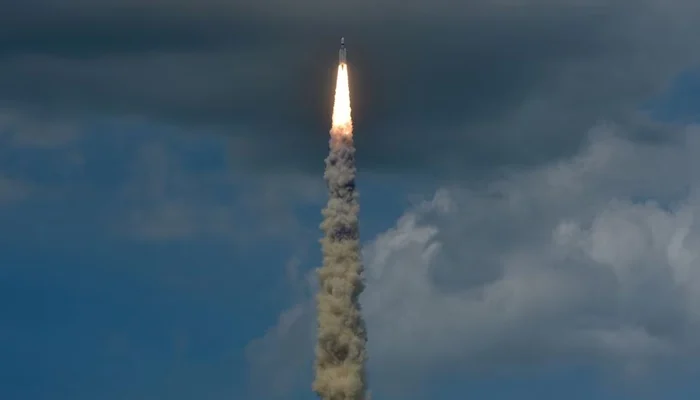ISLAMABAD: Pakistan on Friday termed the landing of India’s Chandrayaan-3 on the Moon “a great scientific feat” — a rare congratulatory note given the two countries’ dynamics.
“India’s landing on the moon is a great scientific feat and the Indian Space Research Organization (ISRO) deserves praise for this important achievement,” Foreign Office Spokesperson Mumtaz Zahra Baloch said during a weekly press briefing.
On Wednesday, India became the first nation to land a craft near the Moon’s south pole, a historic triumph for the world’s most populous nation and its ambitious, cut-price space programme.
The unmanned Chandrayaan-3, which means “Mooncraft” in Sanskrit, touched down at 6:04 pm India time (1234 GMT) as mission control technicians cheered wildly and embraced their colleagues.
Its landing comes days after a Russian probe crashed in the same region and four years since the previous Indian attempt failed at the last moment.
India used rockets much less powerful than the ones the United States used back then, meaning the probe had to orbit the Earth several times to gain speed before embarking on its month-long journey.
The lander, Vikram, which means “valour” in Sanskrit, detached from its propulsion module last week and has been sending images of the Moon’s surface since entering lunar orbit on August 5.
Now that Vikram has landed, a solar-powered rover will explore the surface and transmit data to Earth over its two-week lifespan.
India is closing in on milestones set by global space powers such as the United States and Russia, conducting many of its missions at much lower price tags.
The South Asian nation has a comparatively low-budget space programme, but one that has grown considerably in size and momentum since it first sent a probe to orbit the Moon in 2008.
The latest mission has a cost of $74.6 million — far lower than those of other countries, and a testament to India’s frugal space engineering.
Experts say India can keep costs low by copying and adapting existing technology, and thanks to an abundance of highly skilled engineers who earn a fraction of their foreign counterparts’ wages.
In 2014, India became the first Asian nation to put a craft into orbit around Mars and is slated to launch a three-day crewed mission into Earth’s orbit by next year.



Comments are closed.